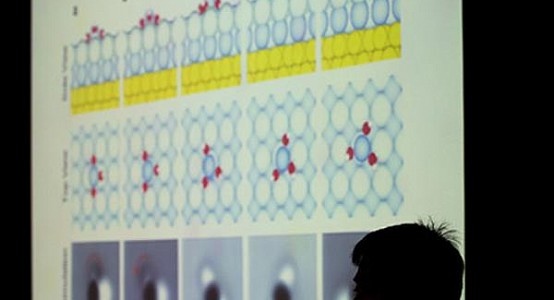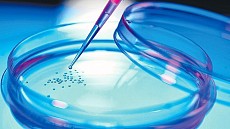Chinese scientists made a breakthrough in studying water structure

Beijing. May 16. Silkroadnews - Chinese scientists have identified the atomic structure of the hydrated sodium ion, the basis of the chemical composition of sea water, China Daily reports.
The scientists of Peking University and the Chinese Academy of Sciences, using the new atomic-force microscopy developed by China, have succeeded in observing the atomic structure of hydrated ions in their natural environment.
The technology, scientists say, can be used to study other water-based liquids, opening up new opportunities for molecular and materials science.
The research was published on May 14 in the journal “Nature”, the report reads.
This is the first time when scientists have visualized the atomic structure of hydrated ions since the term was proposed more than a hundred years ago.
Since the late 19th century, scientists have been studying ion hydration, a process in which water dissolves such materials as sodium chloride or salt. Although this process is extremely common in nature, it remained a mystery to understand how exactly it works at the atomic level.
Water is the most abundant liquid on Earth. Its simple chemical structure - two hydrogen atoms bonded to one oxygen atom - is the basic building block of most lives on Earth. “But the science behind water, especially regarding its structure and interaction with other chemicals, is extremely hard and not well understood,” the agency cited Wang Enge, a leading researcher.
In 2005, the journal Science listed the structure of water as one of the most complex scientific puzzles, despite the fact that it has been studied for a century.
The main reason behind the complexity of water, according to Jiang Ying, a professor at Peking University’s International Center for Quantum Materials, who was a participant in the study, is its simplicity. Hydrogen atoms are so simple and small compared to the oxygen atom, that the weird properties of quantum mechanics start to interfere with experiments and make them less predictable.
“Therefore, it is crucial for scientists to directly see how water interacts with other materials at an atomic level”, Jiang said.
The research team also discovered that even 3 water molecules are needed to allow a single sodium ion to travel 10 to 100 times faster than other hydrated ions - a process that can lead to the creation of more efficient ion batteries, corrosion-resistant coatings and seawater desalination plants.
The discovery will allow scientists to have a better understanding of how cells communicate with each other by exchanging ions through channels on membranes, Jiang said.


